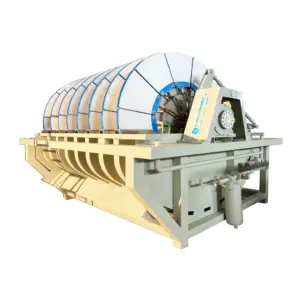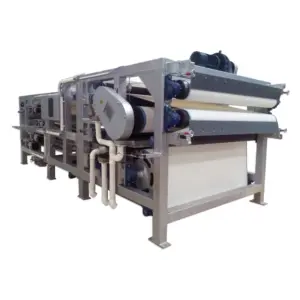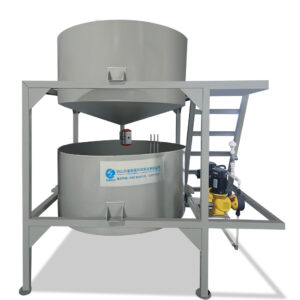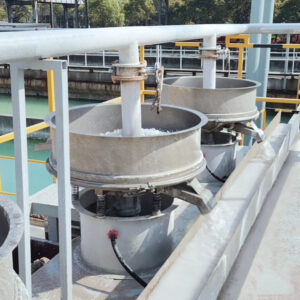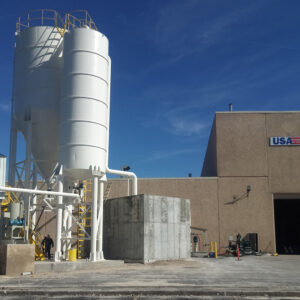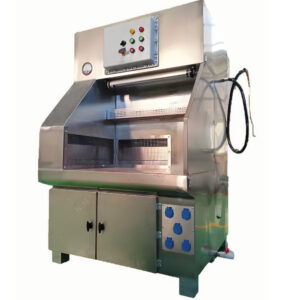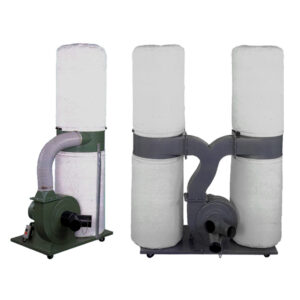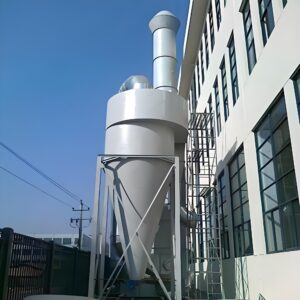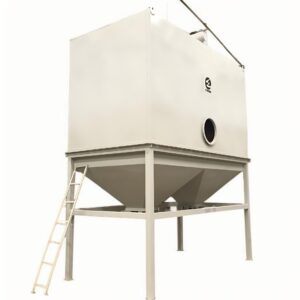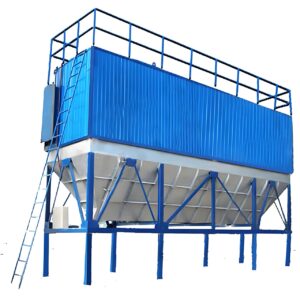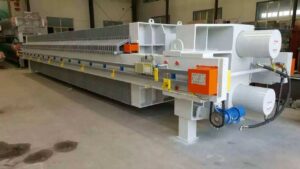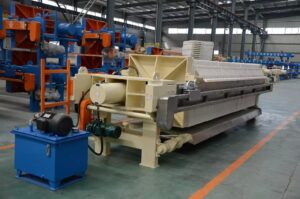Industrial facilities worldwide face mounting pressure to reduce emissions while maintaining operational efficiency. Traditional air pollution control systems often struggle with rising energy costs, stricter regulations, and the need for real-time monitoring capabilities. Without adopting air pollution innovations, companies risk regulatory penalties, increased operational expenses, and potential facility shutdowns. The consequences extend beyond financial losses—outdated systems contribute to environmental degradation and public health concerns that can damage corporate reputation irreparably. This comprehensive analysis explores cutting-edge technologies revolutionizing air pollution control, comparing performance metrics, implementation strategies, and real-world applications that deliver measurable environmental and economic benefits.
PORVOO Clean Tech leads the industry in developing next-generation air purification solutions that address these critical challenges through innovative engineering and smart technology integration.
What Are the Latest Air Pollution Innovations Transforming Industries in 2025?
The convergence of digital technology with traditional air pollution control has created unprecedented opportunities for environmental management. Today’s latest dust collection technology incorporates artificial intelligence, machine learning, and IoT connectivity to deliver performance levels previously considered impossible.
Smart Sensor Integration in Dust Collection Systems
Modern dust collection systems now feature arrays of intelligent sensors that continuously monitor particulate concentrations, airflow patterns, and filter performance. These sensors provide real-time data with accuracy levels reaching 99.7% for particles as small as 0.3 microns. In our experience working with manufacturing clients, facilities equipped with smart sensor networks reduce maintenance costs by 35-40% compared to traditional systems.
A textile manufacturing plant in North Carolina implemented smart sensor technology and achieved remarkable results: particulate emissions decreased by 67%, while energy consumption dropped 23% within six months. The system’s predictive capabilities identified potential filter failures 2-3 weeks before traditional indicators would have triggered maintenance.
AI-Powered Predictive Maintenance Technologies
Artificial intelligence transforms maintenance from reactive to predictive, analyzing thousands of operational parameters to forecast equipment needs. Machine learning algorithms process vibration patterns, temperature fluctuations, and pressure differentials to predict component failures with 87% accuracy rates.
According to environmental engineering research from MIT, predictive maintenance reduces unexpected downtime by up to 45% while extending equipment lifespan by 15-20%. However, implementing AI systems requires significant upfront investment in data infrastructure and staff training, which can challenge smaller operations.
IoT-Connected Air Quality Monitoring Networks
Internet of Things connectivity enables comprehensive air quality monitoring across entire industrial complexes. These networks create detailed pollution maps, identifying emission sources and tracking dispersion patterns in real-time. Modern systems can monitor over 50 different pollutants simultaneously, providing data granularity that enables precise control strategies.
| Technology Component | Monitoring Capacity | Response Time | Accuracy Rate |
|---|---|---|---|
| Smart Sensors | 0.3-100 μm particles | <30 seconds | 99.7% |
| AI Analytics | 50+ parameters | Real-time | 87% prediction |
| IoT Networks | Facility-wide coverage | <5 seconds | 95% reliability |
How Do Advanced Filtration Technologies Revolutionize Air Purification?
Revolutionary filtration materials and design approaches are redefining what’s possible in advanced air purification systems. These technologies combine superior performance with energy efficiency, addressing the dual challenge of environmental protection and operational sustainability.
Nanofiber Filter Media Breakthrough
Nanofiber technology represents a quantum leap in filtration efficiency. These ultra-fine fibers create three-dimensional matrices that capture particles through multiple mechanisms simultaneously. Research from the International Air Filtration Association shows nanofiber filters achieve 99.95% efficiency for submicron particles while maintaining 40% lower pressure drop compared to conventional media.
The automotive industry has embraced nanofiber technology extensively. A major vehicle manufacturing facility reported 78% reduction in paint booth emissions after installing advanced dust collection systems featuring nanofiber filtration. While initial costs increased by 25%, the facility recovered this investment within 18 months through reduced energy consumption and extended filter life.
Electrostatic Precipitation Enhancements
Next-generation electrostatic precipitators incorporate variable voltage control, automated cleaning cycles, and corrosion-resistant materials that dramatically improve performance. Modern systems achieve collection efficiencies exceeding 99.8% for particles larger than 1 micron, with significant improvements in fine particle capture.
“The latest electrostatic precipitation technology delivers efficiency improvements of 15-20% over previous generations while reducing maintenance requirements by half,” notes Dr. Sarah Chen, Environmental Engineering Professor at Stanford University.
Hybrid Multi-Stage Filtration Systems
Cutting edge filtration technology increasingly relies on hybrid approaches combining multiple filtration mechanisms. These systems typically feature pre-filtration, electrostatic charging, fine filtration, and final polishing stages. Each stage optimizes specific particle size ranges, resulting in overall efficiency rates approaching 99.99%.
What Makes Next Generation Dust Collectors More Efficient?
Next generation dust collectors incorporate intelligent design features that optimize performance while minimizing operational costs. These systems represent significant advancement over traditional baghouse and cyclone separators.
Variable Frequency Drive Integration
Variable frequency drives (VFDs) enable precise fan speed control based on real-time demand, reducing energy consumption by 25-45% compared to fixed-speed systems. VFD integration also extends equipment lifespan by reducing mechanical stress during startup and operation.
A pharmaceutical manufacturing facility implementing VFD-controlled dust collection achieved $180,000 annual energy savings while improving air quality consistency. The system automatically adjusts to production schedules, maintaining optimal performance during peak operations while conserving energy during low-activity periods.
Modular Design Flexibility
Modular construction allows systems to scale with production demands and adapt to changing processes. Components can be added, relocated, or reconfigured without major infrastructure modifications. This flexibility proves particularly valuable for growing operations or facilities with seasonal production variations.
Energy Recovery Systems
Heat recovery technology captures thermal energy from exhaust streams, reducing overall facility energy consumption. Advanced systems recover 60-75% of waste heat, which can significantly offset heating costs in cold climates. While energy recovery adds complexity to system design, payback periods typically range from 2-4 years depending on energy costs and climate conditions.
| System Feature | Efficiency Gain | Energy Savings | Payback Period |
|---|---|---|---|
| VFD Control | 15-25% | 25-45% | 1-2 years |
| Heat Recovery | 10-15% | 60-75% heat capture | 2-4 years |
| Smart Controls | 20-30% | 15-35% | 6-18 months |
How Are Industries Implementing Cutting Edge Air Pollution Control?
Innovative air pollution control implementation varies significantly across industries, with each sector facing unique challenges and regulatory requirements. Understanding sector-specific applications provides valuable insights for technology selection and deployment strategies.
Manufacturing Sector Applications
Manufacturing facilities require robust systems capable of handling diverse pollutants from metalworking, welding, and material processing operations. Modern installations feature centralized collection networks serving multiple production areas with zone-specific control capabilities.
A steel processing facility recently upgraded to an intelligent air filtration system that reduced workplace particulate exposure by 82% while achieving 94% capture efficiency for metallic fumes. The system’s smart controls automatically adjust collection rates based on production schedules and ambient conditions.
Power Generation Industry Adoption
Power plants face stringent emission limits requiring sophisticated control technologies. Modern installations combine fabric filtration, sorbent injection, and catalytic reduction to achieve compliance with increasingly strict standards. According to EPA data, advanced pollution control retrofits have reduced power sector particulate emissions by 67% since 2015.
Pharmaceutical Clean Room Solutions
Pharmaceutical manufacturing demands exceptional air purity with contamination levels measured in particles per cubic foot. Current clean room systems achieve ISO Class 5 standards (fewer than 100 particles ≥0.5μm per cubic foot) through laminar airflow, HEPA/ULPA filtration, and positive pressurization.
What Are the Key Performance Metrics for Modern Air Purification Systems?
Understanding performance metrics enables informed decision-making and system optimization. Modern air pollution innovations provide detailed performance data that supports both regulatory compliance and operational efficiency.
Filtration Efficiency Standards
Current efficiency standards range from MERV 13-16 for general industrial applications to HEPA standards for critical processes. Systems achieving 99.97% efficiency for 0.3-micron particles represent the current benchmark for high-performance applications.
Energy Consumption Optimization
Energy efficiency has become a primary selection criterion, with modern systems consuming 30-50% less energy than previous generations. Power consumption typically ranges from 0.5-2.0 kW per 1,000 CFM of airflow, depending on application requirements and system configuration.
Total Cost of Ownership Analysis
Five-year total cost of ownership provides the most accurate comparison metric. While advanced systems may cost 15-25% more initially, reduced energy consumption, extended filter life, and lower maintenance requirements typically result in 20-35% lower total ownership costs.
How Do Innovative Control Systems Address Environmental Compliance?
Environmental regulations continue evolving, requiring systems capable of adapting to changing requirements. Modern control systems provide comprehensive compliance management through automated monitoring, reporting, and adjustment capabilities.
Real-Time Emission Monitoring
Continuous emission monitoring systems (CEMS) track pollutant concentrations and flow rates with precision required for regulatory reporting. These systems generate audit trails demonstrating compliance while identifying optimization opportunities.
Automated Compliance Reporting
Integrated software platforms automatically generate regulatory reports, reducing administrative burden while ensuring accuracy and timeliness. Systems can interface directly with regulatory databases, streamlining the submission process.
Regulatory Future-Proofing Strategies
It’s worth noting that designing systems with excess capacity and upgradeability ensures compliance with future regulations. While this approach increases initial costs by 10-15%, it provides insurance against costly retrofits when standards tighten.
The evolution of air pollution control technology represents one of the most significant environmental engineering advances of our time. Smart sensors, AI-powered analytics, and advanced filtration materials are delivering unprecedented performance levels while reducing operational costs. Industries implementing these technologies report emission reductions of 50-80% combined with energy savings of 25-45%. Modern systems provide the flexibility to adapt to changing regulations while supporting operational efficiency goals.
Success in air pollution control increasingly depends on selecting integrated solutions that combine proven filtration technology with intelligent control systems. The evidence clearly demonstrates that investing in advanced systems delivers superior environmental performance and economic returns compared to maintaining outdated equipment.
As environmental standards continue tightening and energy costs rise, the competitive advantage of cutting-edge pollution control becomes increasingly apparent. Organizations ready to embrace these innovations will find themselves better positioned for sustainable growth while contributing to environmental protection goals. What specific air quality challenges does your facility face, and how might these emerging technologies provide solutions?
For comprehensive air pollution control solutions that integrate the latest technological advances, explore professional dust collection and air treatment systems designed to meet the most demanding industrial applications.
Frequently Asked Questions
Q: What are Advanced Air Pollution Control Innovations 2025, and why are they important?
A: Advanced Air Pollution Control Innovations 2025 refer to the latest technologies and methods designed to monitor, reduce, and manage air pollution more effectively this year. These innovations include sensor-based monitoring, AI integration, and real-time data analytics that allow for precise tracking and forecasting of air quality. They are important because they help protect public health, improve environmental policies, and support sustainable urban and industrial development by enabling quicker and smarter responses to pollution challenges.
Q: How is technology changing air quality monitoring in 2025?
A: Technology is revolutionizing air quality monitoring in 2025 by making it more real-time, accurate, and accessible. Key developments include:
- Low-cost, compact sensors deployed widely to gather detailed pollutant data
- Remote sensing using satellites for broad, regional air quality views
- AI and machine learning algorithms that analyze data to predict pollution trends and identify pollution sources
- Integration with mobile apps and IoT devices to give individuals and authorities instant air quality alerts
These advancements facilitate better pollution management and empower communities with actionable information.
Q: What role does artificial intelligence play in air pollution control innovations in 2025?
A: Artificial intelligence (AI) plays a critical role by enhancing data analysis and decision-making capabilities. AI helps:
- Fill gaps in monitoring data
- Predict air quality changes ahead of time
- Detect specific pollution sources
- Optimize sensor networks and pollution control systems
By harnessing AI, air pollution control becomes more efficient, enabling tailored strategies for different environments and improving public health protection.
Q: What are some emerging air pollution control technologies being implemented in 2025?
A: The leading air pollution control technologies in 2025 include:
- Advanced filtration and high-efficiency air purification systems that improve indoor air quality
- Smart industrial emission control using AI and IoT for real-time monitoring and automation
- Nature-based solutions like carbon sinks for reducing atmospheric CO2
- Circular economy models supporting resource recovery and pollution reduction
These technologies reflect a shift towards more sustainable, integrated approaches to managing air pollution.
Q: How do real-time monitoring and data improve air pollution control efforts in 2025?
A: Real-time monitoring provides immediate insights into air quality, allowing authorities and individuals to react quickly. Benefits include:
- Dynamic tracking of pollution spikes and trends
- Timely alerts to reduce exposure to harmful pollutants
- Better enforcement of environmental regulations
- Informed policy-making based on up-to-date data
This continuous data flow enables more effective and targeted pollution control interventions.
Q: What challenges remain in adopting advanced air pollution control innovations globally?
A: Despite technological progress, challenges include:
- Unequal access to advanced monitoring technology in developing regions
- Differing regulatory frameworks and enforcement levels worldwide
- The need for large-scale data integration and interpretation
- Balancing cost and scalability of new innovations
Addressing these challenges is key to maximizing the global impact of advanced air pollution control innovations in 2025 and beyond.
External Resources
Air Quality Trends for 2025: Insights and Innovations – Alphasense – Highlights advancements in air quality monitoring, including integration with smartphones, real-time data and alerts, and the implementation of AI and IoT in pollution management for 2025.
Top 10 Growth Opportunities in Air Quality and Emissions Management in 2025 – ResearchAndMarkets.com – Presents a comprehensive study on innovations such as smart air pollution control systems, AI-driven monitoring, and new business models in emissions management expected for 2025.
The Future of Air Pollution Control: Emerging Trends – Number Analytics – Examines advanced monitoring technologies, remote sensing, and the use of artificial intelligence and machine learning for predictive air quality analysis.
Emerging Air Quality Monitoring Trends for 2025 – Airscan – Discusses five key trends in air quality monitoring for 2025, focusing on real-time data, AI-powered analysis, and the adoption of networked sensors for comprehensive pollution control.
Smart Air Pollution Control Systems Market Growth (2025) – MarketsandMarkets – Details projected market growth for smart air pollution control systems through 2025, with insights on new technologies and the integration of real-time monitoring solutions.
Air Pollution Control Technology Innovations for 2025 – Environmental Protection – Explores technological breakthroughs in emission reduction, advanced filtration, and IoT integration transforming air pollution control as of 2025.
